Abstract
The results of oral tolerance tests of two dipeptides and of their constitutent amino acids are compared in normal subjects and in a case of Hartnup disease. In the control subjects the rate of absorption of phenylalanine from phenylalanyl-phenylalanine and of tryptophan from glycyl-tryptophan was slower than after the equivalent amount of the free amino acids. Absorption of the two essential amino acids (tryptophan and phenylalanine) in the patient was almost zero after administration in the free form, but was much greater after the dipeptide.
Results of experiments on absorption and hydrolysis of the two peptides in the rat small intestine are also reported.
It is suggested that whereas normal subjects absorb essential amino acids by a dual mechanism of mucosal uptake of free amino acids and oligopeptides, nutrition in Hartnup disease is largely dependent on uptake of oligopeptides containing the amino acids affected by the intestinal transport defect of the disease.
Full text
PDF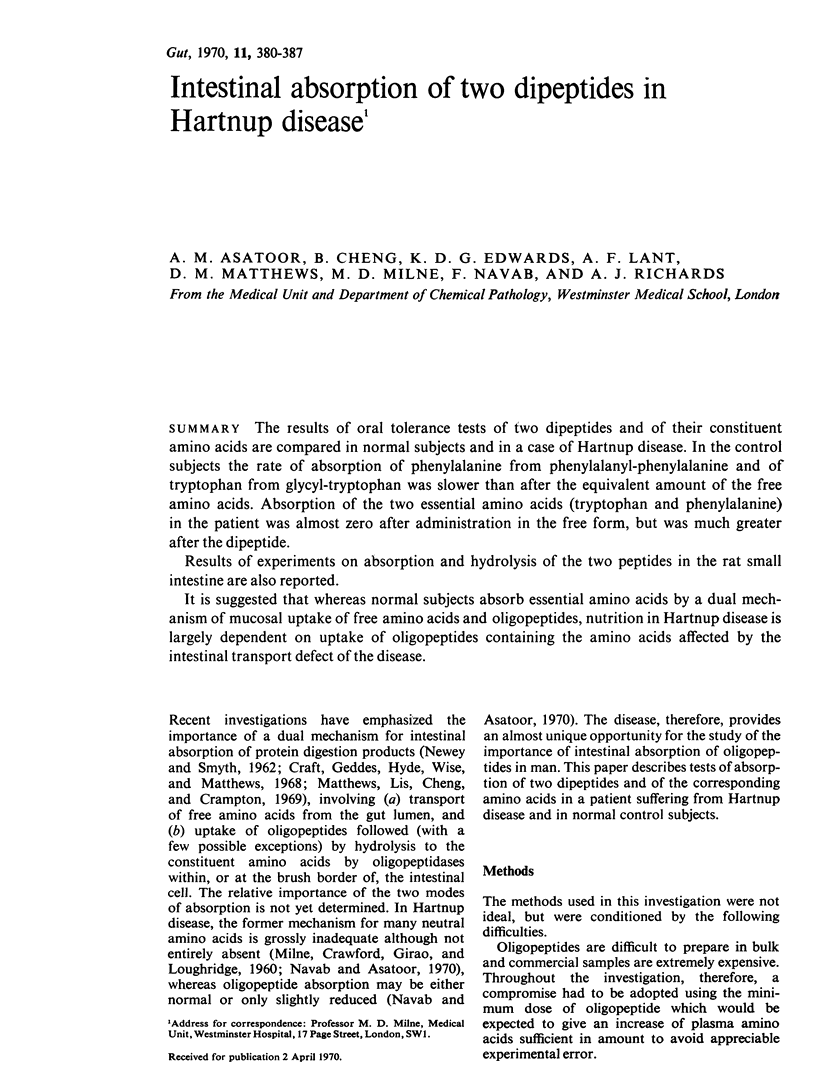
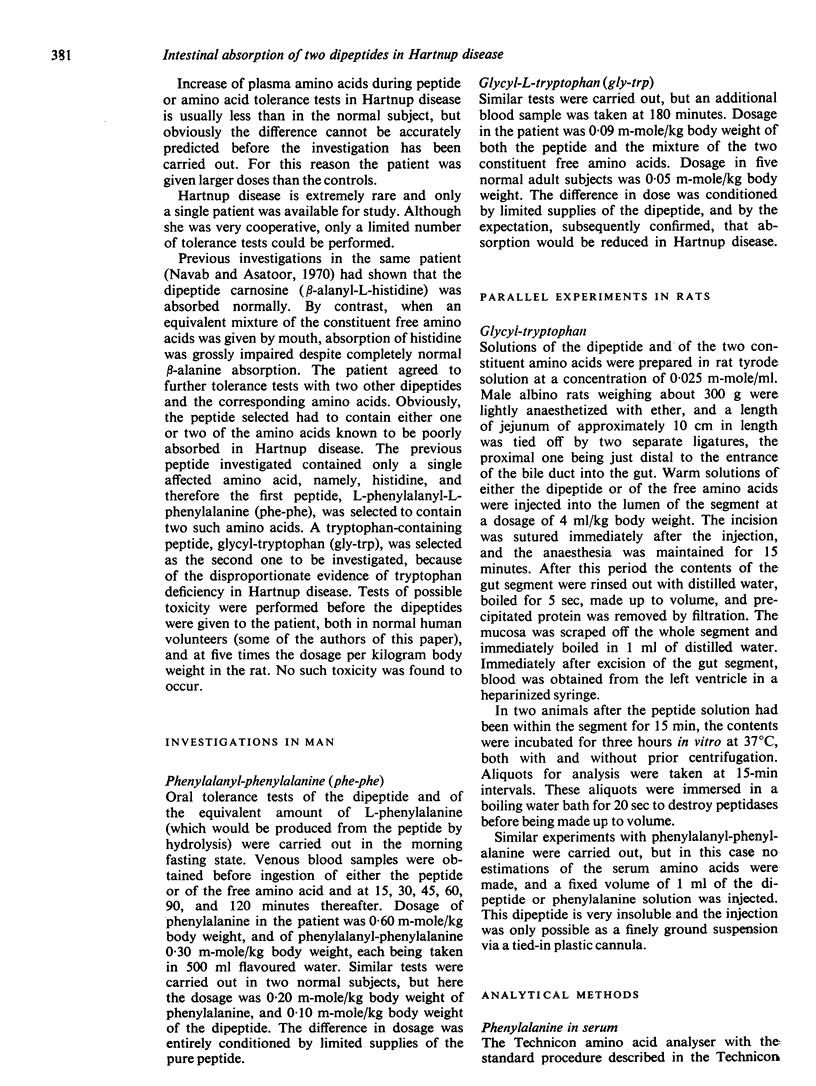
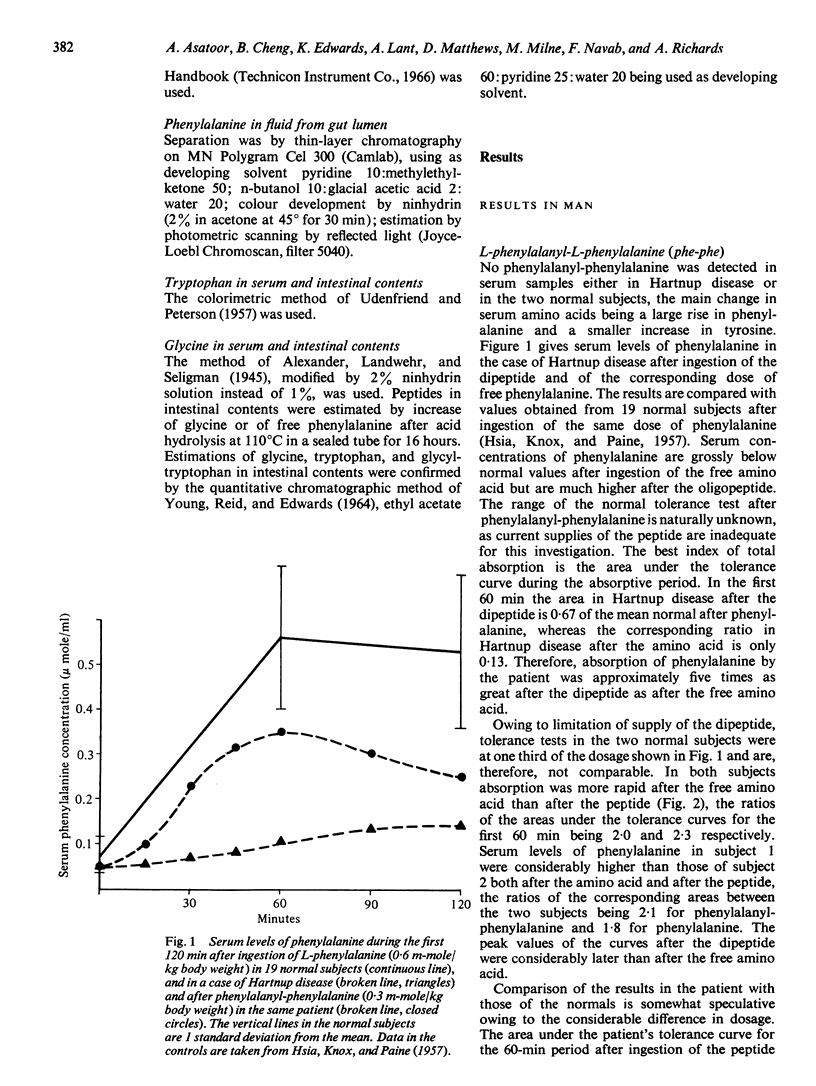
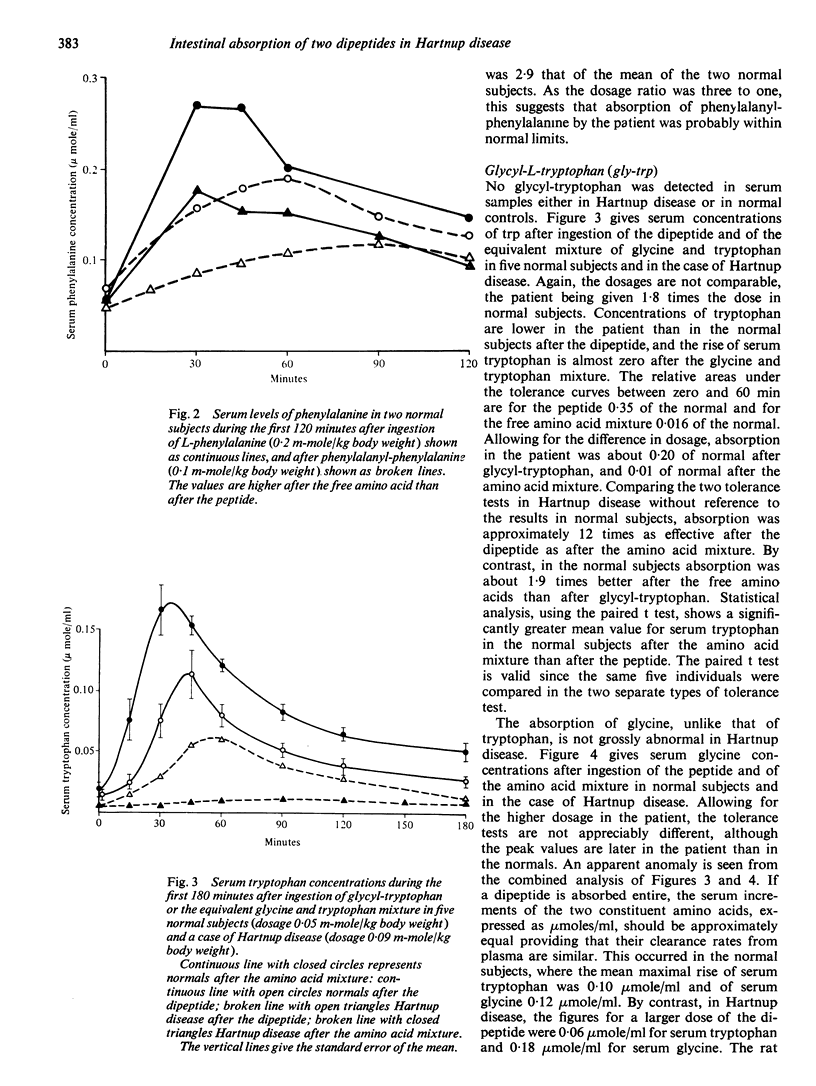
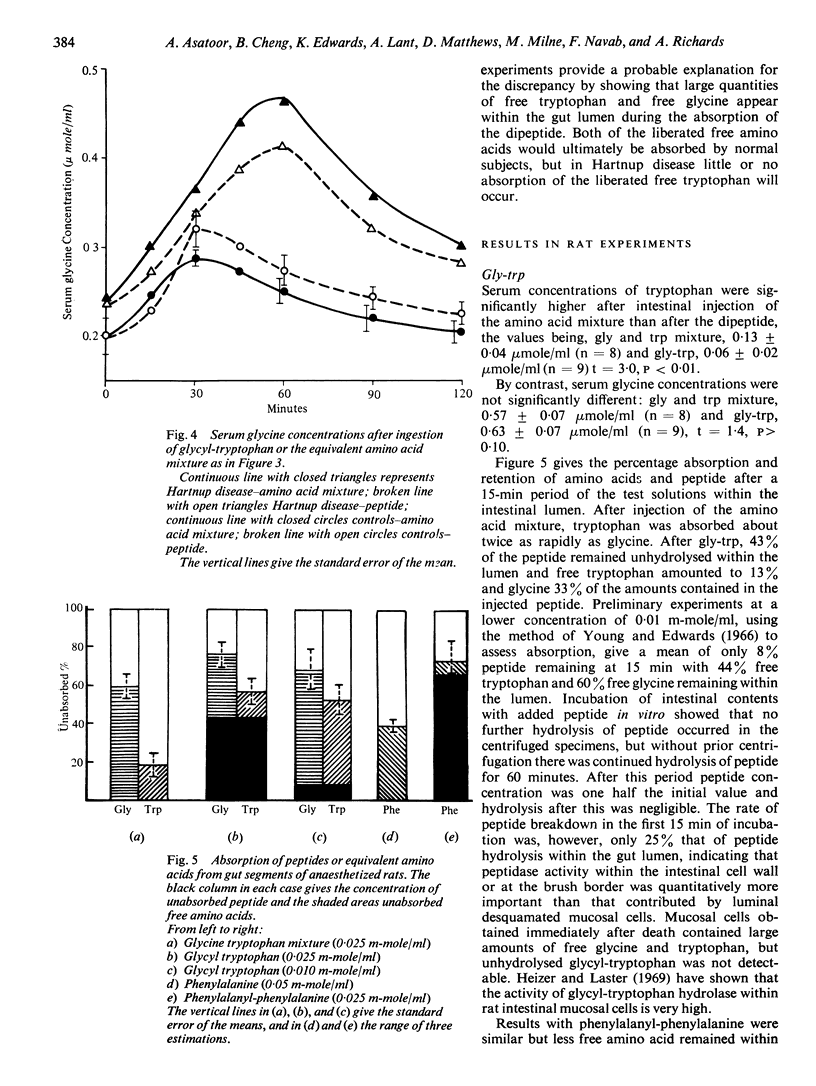
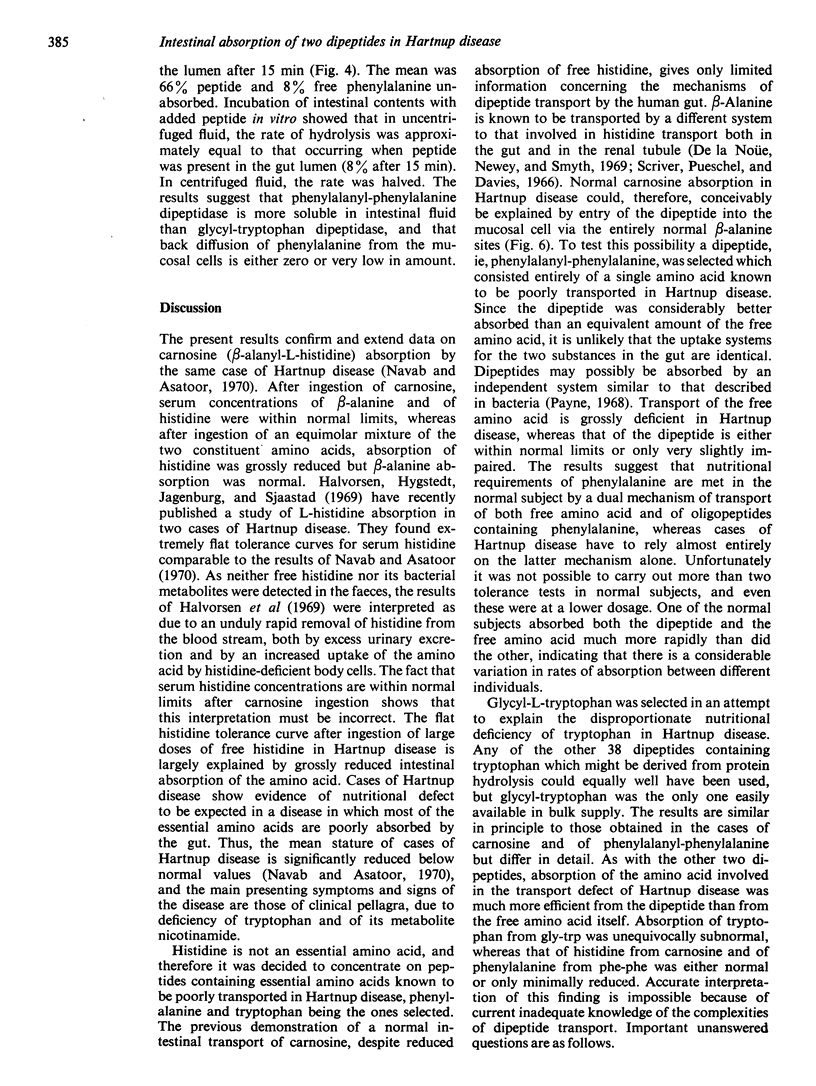
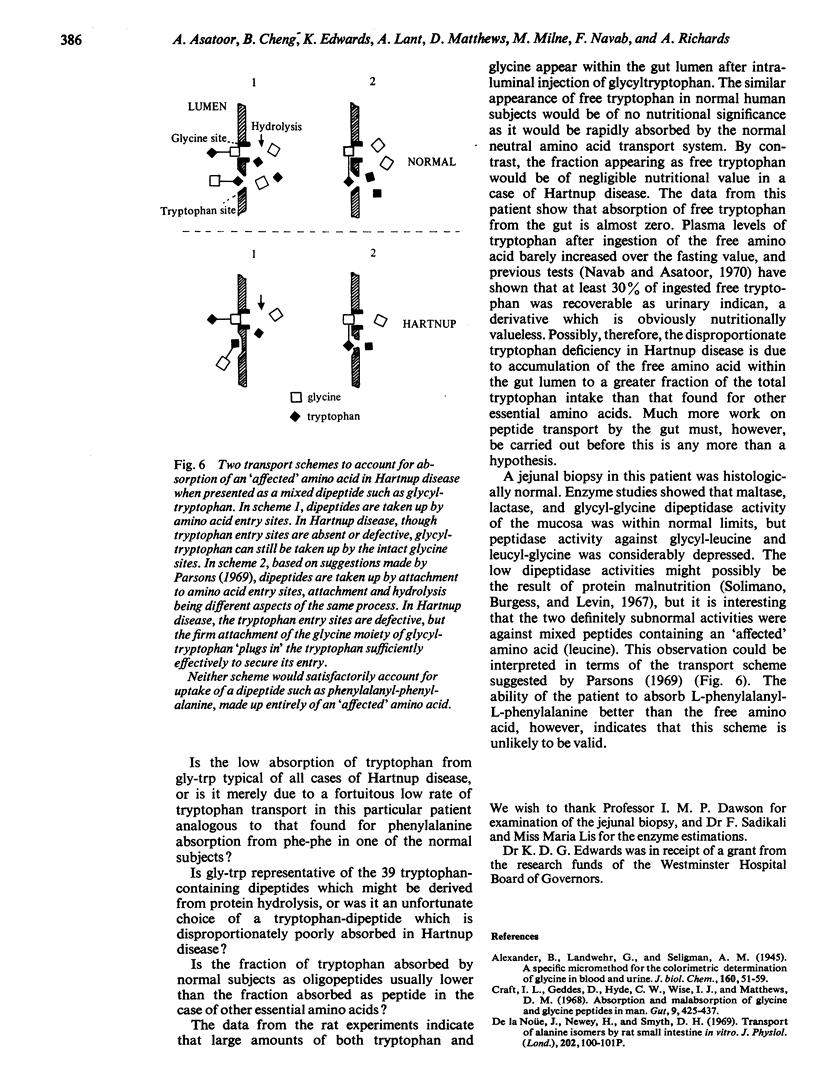
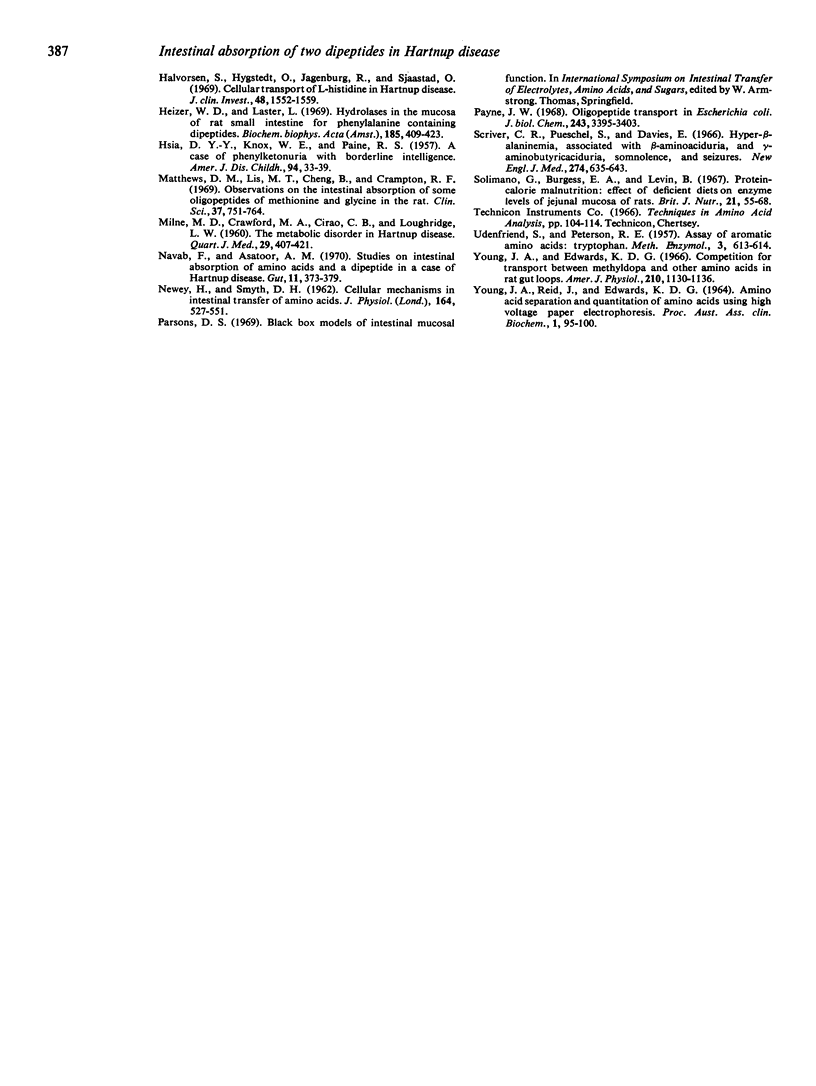
Selected References
These references are in PubMed. This may not be the complete list of references from this article.
- Craft I. L., Geddes D., Hyde C. W., Wise I. J., Matthews D. M. Absorption and malabsorption of glycine and glycine peptides in man. Gut. 1968 Aug;9(4):425–437. doi: 10.1136/gut.9.4.425. [DOI] [PMC free article] [PubMed] [Google Scholar]
- HSIA D. Y., KNOX W. E., PAINE R. S. A case of phenylketonuria with borderline intelligence. AMA J Dis Child. 1957 Jul;94(1):33–39. doi: 10.1001/archpedi.1957.04030020035008. [DOI] [PubMed] [Google Scholar]
- Halvorsen S., Hygstedt O., Jagenburg R., Sjaastad O. Cellular transport of L-histidine in Hartnup disease. J Clin Invest. 1969 Aug;48(8):1552–1559. doi: 10.1172/JCI106121. [DOI] [PMC free article] [PubMed] [Google Scholar]
- Heizer W. D., Laster L. Hydrolases in the mucosa of rat small intestine for phenylalanine-containing dipeptides. Biochim Biophys Acta. 1969;185(2):409–423. doi: 10.1016/0005-2744(69)90434-3. [DOI] [PubMed] [Google Scholar]
- MILNE M. D., CRAWFORD M. A., GIRAO C. B., LOUGHRIDGE L. W. The metabolic disorder in Hartnup disease. Q J Med. 1960 Jul;29:407–421. [PubMed] [Google Scholar]
- Matthews D. M., Lis M. T., Cheng B., Crampton R. F. Observations on the intestinal absorption of some oligopeptides of methionine and glycine in the rat. Clin Sci. 1969 Dec;37(3):751–764. [PubMed] [Google Scholar]
- NEWEY H., SMYTH D. H. Cellular mechanisms in intestinal transfer of amino acids. J Physiol. 1962 Dec;164:527–551. doi: 10.1113/jphysiol.1962.sp007035. [DOI] [PMC free article] [PubMed] [Google Scholar]
- Navab F., Asatoor A. M. Studies on intestinal absorption of amino acids and a dipeptide in a case of Hartnup disease. Gut. 1970 May;11(5):373–379. doi: 10.1136/gut.11.5.373. [DOI] [PMC free article] [PubMed] [Google Scholar]
- Payne J. W. Oligopeptide transport in Escherichia coli. Specificity with respect to side chain and distinction from dipeptide transport. J Biol Chem. 1968 Jun 25;243(12):3395–3403. [PubMed] [Google Scholar]
- Scriver C. R., Pueschel S., Davies E. Hyper-beta-alaninemia associated with beta-aminoaciduria and gamma-aminobutyricaciduaia, somnolence and seizures. N Engl J Med. 1966 Mar 24;274(12):635–643. doi: 10.1056/NEJM196603242741201. [DOI] [PubMed] [Google Scholar]
- Solimano G., Burgess E. A., Levin B. Protein-calorie malnutrition: effect of deficient diets on enzyme levels of jejunal mucosa of rats. Br J Nutr. 1967;21(1):55–68. doi: 10.1079/bjn19670009. [DOI] [PubMed] [Google Scholar]
- Young J. A., Edwards K. D. Competition for transport between methyldopa and other amino acids in rat gut loops. Am J Physiol. 1966 May;210(5):1130–1136. doi: 10.1152/ajplegacy.1966.210.5.1130. [DOI] [PubMed] [Google Scholar]


